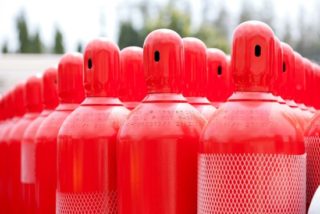-
Australian government targeting hydrogen, CCS, low-emissions steel, storage, and soil carbon in industrial strategy
Date posted:
-
-
-
Post Author
Patrick LaveryCombustion Industry News Editor
-

The Australian government in late September released its ‘First Low Emissions Technology Statement’ as part of its Technology Investment Roadmap, which is aimed at reducing greenhouse gas emissions. Five technologies are identified as priorities in achieving the country’s goal of being recognised as a “global low emissions technology leader”. They, and the ‘stretch goals’ associated with them are:
- Clean hydrogen being produced at under AUD$2/kg (US$1.42/kg;€1.21/kg)
- Providing energy storage for firming for under AUD$100/MWh (US$71/MWh;€61/MWh)
- Producing low-emissions steel for under AUD$900/tonne (US$641/tonne;€546/tonne) and low-emissions aluminium for under AUD$2,700/tonne
- Compression, transportation and storage for captured carbon dioxide at a cost of less than AUD$20/tonne CO2 (US$14.2/tonne;€12.1/tonne) when transported around 100 km
- Soil carbon, with the target being measurement for less than AUD$3/hectare (US$2.14/ha;€1.82/ha) per year.
Wisely, perhaps, given the difficulty of predictions, no target timeframes have been set for the stretch goals, and it appears they have been made more from an economic viewpoint rather than the viewpoint of what is technologically achievable. For instance, the hydrogen target is set because at the AUD$2/kg price, “clean hydrogen becomes competitive in applications such as producing ammonia, as a transport fuel and for firming electricity.” This is, however, paired with technological considerations: “Clean hydrogen from off-grid gas with CCS, and coal gasification with CCS might be the lowest cost clean production methods in the short-term, although renewable production methods will come down in cost as clean hydrogen demand grows.”
The inclusion of carbon dioxide compression, transportation and storage has been welcomed by the Global CCS Institute, which issued a press-release stating that it “underscores CCS’s role as a vital low-emissions technology that can deliver multi-million tonne abatement at competitive costs.” The government’s reasoning is twofold – not only does it directly support baseload power generation, oil and gas extraction, steelmaking, cement making and other industries, it also offers indirect support for growing the hydrogen industry, where high-concentration CO2 streams are produced from coal gasification or methane reforming.
Interestingly, the document as a whole recognises that technological development ebbs and flows – some will become mature and cease to need governmental support, others will prove unfeasible, and still others will emerge in response to contingencies. Accordingly, the government will “refine its approach over time”, though the downside to this is that there may be reduced certainty of future funding.
The strategy has received a mixed response, with criticism of it as being too friendly to fossil fuels, and praise from the most recent chairman of the Australian Renewable Energy Agency.
